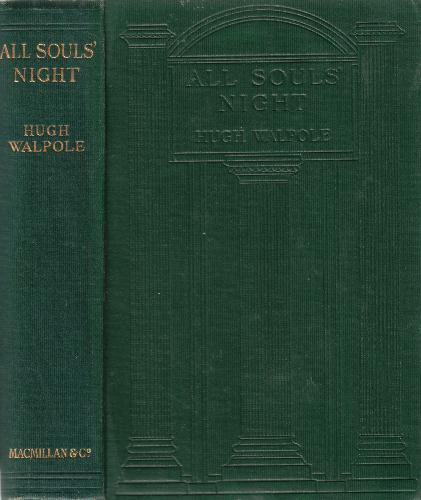
Hugh Walpole (1884-1941) was a prolific and hugely popular writer who wrote in many genres, and whose early realist novels were nurtured by a friendship with Henry James. He also wrote popular fiction for a juvenile readership, along with historical romances for older readers. His career as a writer was a refuge from an emotionally traumatic youth and young manhood, in which he grappled with an unhappy school life, latent homosexuality (including an early and powerful crush on fellow ghost-story writer and mentor A.C. Benson) and a waning religious faith that put paid to his father’s ambitions for his son to join him in a clerical career. Walpole earned critical and commercial success as a professional writer, but this was only one aspect of an eventful, if tragically short life – so much so that it’s hard to summarise here. His Wikipedia page is worth a look for his wartime activities alone, and I shall certainly be reading more by Walpole in the future, beyond the supernatural stories, which were the only part of his life and work I had so far been familiar with.
Since his death, Walpole has come to be recognised as a master of the supernatural tale and a staple of ghost story anthologies. His 1933 collection All Souls’ Night contains sixteen examples – including such well-known stories as ‘The Little Ghost’, ‘The Silver Mask’ and the werewolf narrative ‘Tarnhelm’.
IMPORTANT NOTE: Unfortunately, this work is not in the public domain in the U.S.A. – in order to comply with United States copyright legislation, readers in that country should not download the ebook. The book is available to purchase from Valancourt Books, in an edition which includes a scholarly introduction by John Howard.







